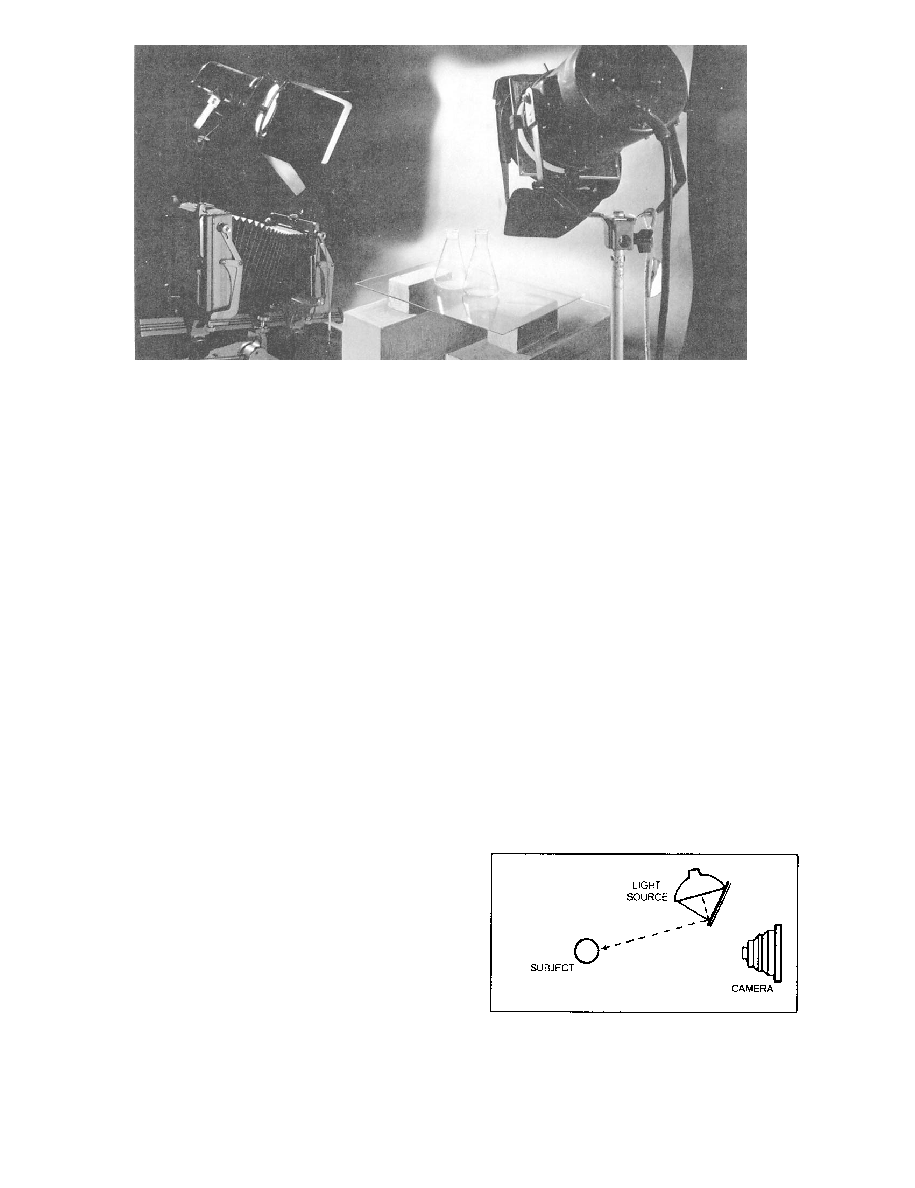
DOFMaster
for Windows
On-line
Depth of Field
Calculator
DOFMaster for Mobile Devices
On-line
Depth of Field
Table
Hyperfocal
Distance Chart
Articles
FAQ
Recommended
Books
Support
Contact
Links
Home
for Windows
On-line
Depth of Field
Calculator
DOFMaster for Mobile Devices
On-line
Depth of Field
Table
Hyperfocal
Distance Chart
Articles
FAQ
Recommended
Books
Support
Contact
Links
Home
As an Amazon Associate I earn from qualifying purchases.
![]()
studying pictures of glass objects, notice how all the
good pictures were made using variations of basic
silhouette lighting. You will find it is easy to produce an
infinite variety of effects by simply changing or
redirecting the bounce light from the background.
however, be placed with great care. Changing the
When the lights are positioned to cause a great deal of
reflection from the background and this reflection is
uncontrolled, it may cause lens flare and result in flat
negatives. Lens flare can be controlled or eliminated
by erecting a black tent to extend from the lens board
to the subject. This tent must be kept outside the angle
of view of the camera. A focusing cloth draped over
wood dowels works well. When photographing glass
products, you should always use a matte box over the
camera lens.
the glass. This can be done by using front bounce light
from a narrow, diffused light source. To create such a
barn door of a floodlight and control the width of the
light beam emitted with the opposite barn door. This
narrow beam of light can be placed on either side of the
camera and should be at camera level or higher. The
created by this method, can be controlled by moving the
light closer to or farther from the lens axis. Do not allow
highlights to obscure etching on the glass.
meter reading of the background and increase the
indicated exposure by four times.
usually very great, and excessive contrast will result
with normal development.
Basic Photography Course

As an Amazon Associate I earn from qualifying purchases.
WWW.DOFMASTER.COM
© 2006 Don Fleming. All rights reserved.
© 2006 Don Fleming. All rights reserved.